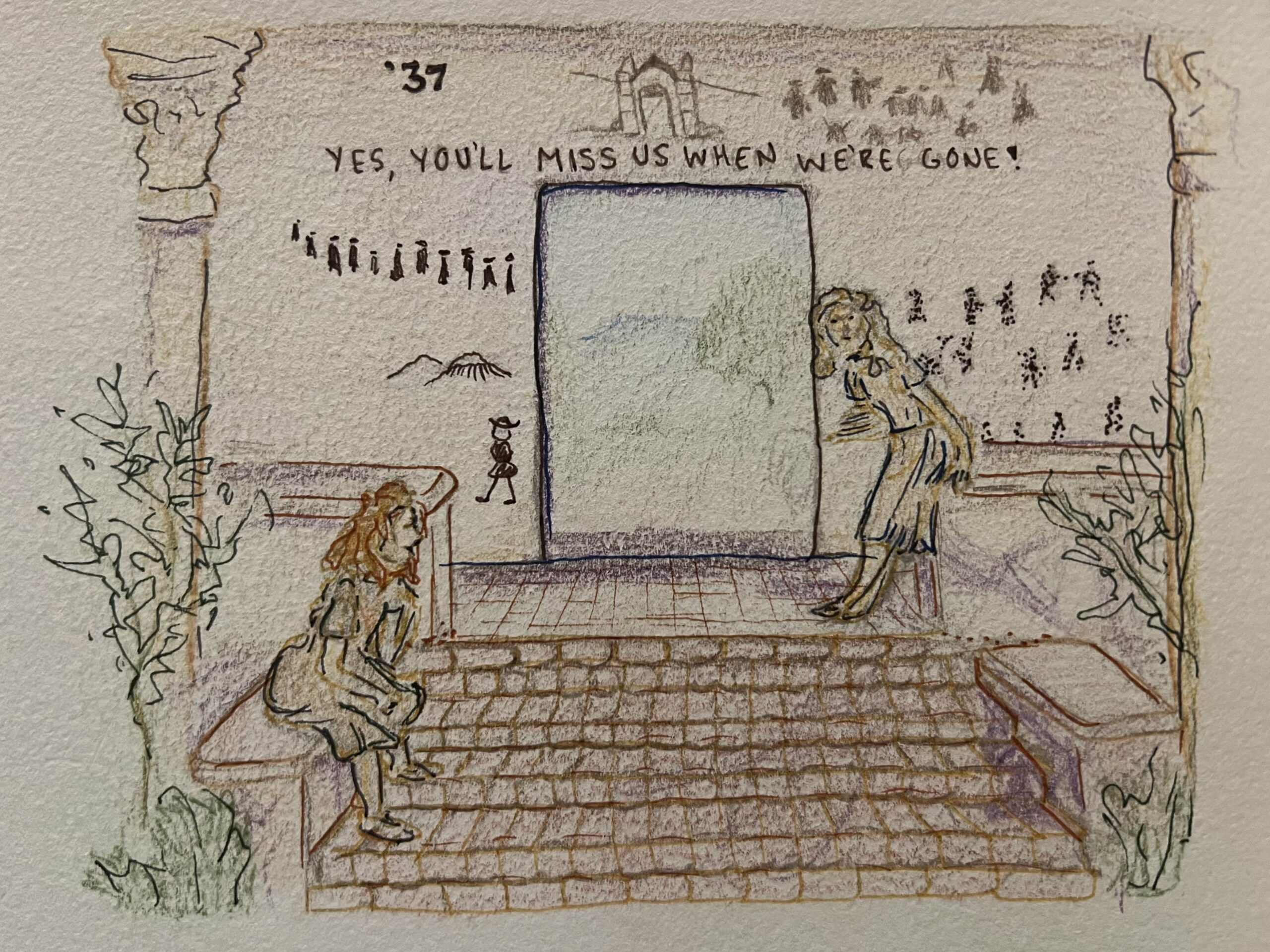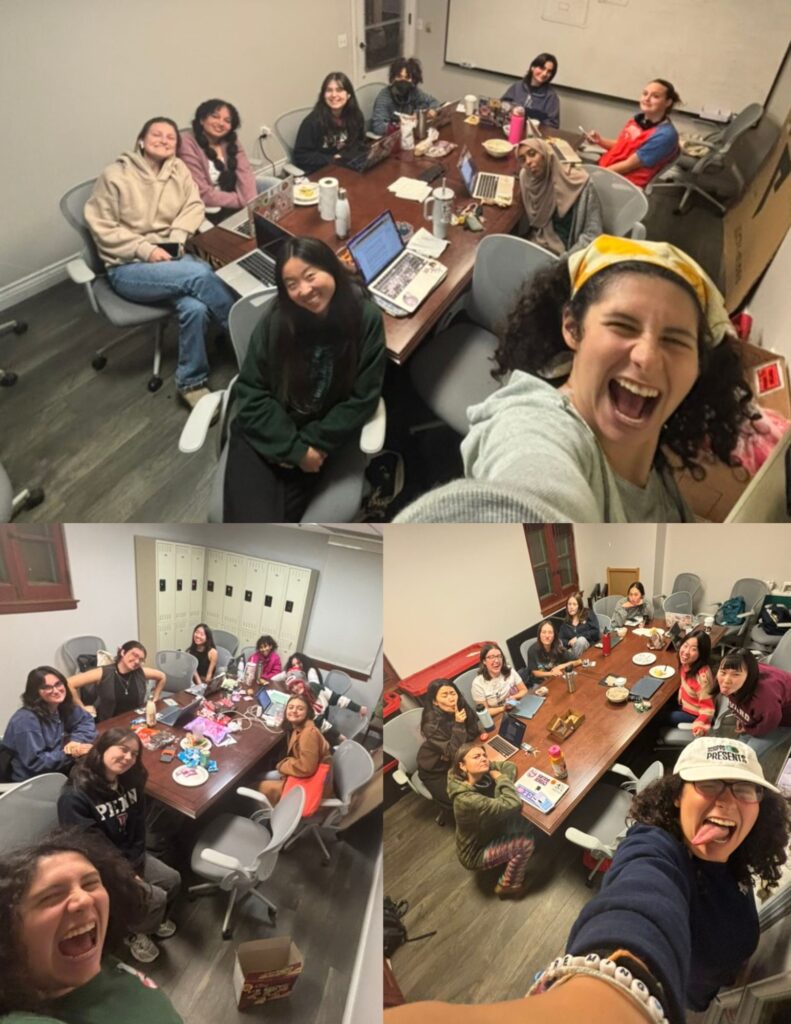Anna Grez ’27
Design Editor
To better understand the complexities of whether or not Scripps College lives up to its standing as a Historically Women’s College (HWC), it is first relevant to understand the history of coeducational and women’s higher education in the United States. Some of the first colleges in the United States to admit women were seminaries. The first coeducational college, Oberlin, was founded in 1833. Similar co-educational institutions followed, such as the University of Michigan, which began admitting women to save money spent on constructing, operating, and hiring for a separate women’s institution.
In 1836 Wesleyan, the first women’s college, opened its doors. After 100 years of women’s colleges existence, the “Seven Sisters” (Mount Holyoke, Vassar, Wellesley, Smith, Radcliffe, Bryn Mawr and Barnard) were founded as the female counterparts to male-only Ivy league colleges. Oftentimes, colleges would refuse to admit women in fear that men would no longer want to attend. In this way, women’s attendance at these institutions has been historically linked to a perceived lower status.
According to Scripps’ website:
“Diversity is our strength. As the only women’s college in The Claremont Colleges, a co-ed consortium of five prestigious undergraduate institutions, Scripps offers a supportive community of leaders and unique perspectives.
At Scripps, our students thrive in a collaborative environment where their voices are heard and amplified. Our students take ownership of their academic and post-graduate journey.
Studies have shown that students at women’s colleges are more likely to develop the skills needed for their careers, graduate in four years or less, and feel that they’ve made a positive financial investment in their education. By helping students develop their academic and interpersonal abilities, women’s colleges are preparing the next generation of global leaders and scholars to succeed in their chosen fields.”
Scripps does not live up to these standards.
Scripps’ first stated goal is diversity. But what kind of diversity are they referring to? Also found on their website, Scripps claims it, “strives toward an environment in which acknowledging and engaging issues of race, ethnicity, religion, belief, opinion, economic class, age, gender, sexuality, and ableness are inextricably part of the experience of the campus community.”
If we accept this as our definition of diversity, this is certainly a lofty goal for the institution. The phrase “strive toward” provides a lot of wiggle room for the Scripps to claim they are attempting to embody the ideals they share online, and in their advertising, regardless of their actual actions. It is unclear how the current climate of student policing, fear-mongering, and limited community engagement, as seen through the recent policy changes and destruction of community spaces, factors into their attempt to “strive towards” a diverse community.
One Scripps sophomore, who has chosen to remain anonymous, voiced their concern about the school’s recent actions, stating that “[they] expect feminist rhetoric and uplifting minority groups which [they] don’t think Scripps has succeeded in especially in the closing of the Motley and the investment of weapons manufacturers to continue and support the ongoing genocide in Gaza.”
The diversity the school claims is not visible when looking at student demographics either. As a predominantly white institution, Scripps’ student body is 52.4% white. The faculty is similarly made up of 71.5% white professors.
Another value Scripps claims to purport is, “a positive financial investment” in education. While this is subjective, Scripps does happen to be ranked #20 on CBS’s ranking of the 50 most expensive colleges in America. Scripps’ full cost of attendance is $90,886 – $91,886 per year. This adds to a total cost of $363,544 for four years of attendance. Is this a positive financial investment? While this is an individual decision, this is a significant investment to make, especially at a young age and just before entering a fluctuating workforce.
A common theme among the students I interviewed for this article was a desire for Scripps to be more welcoming to non-binary and trans students. While Scripps’ policy allows trans women to apply, non-binary and gender-nonconforming students are not as protected and accepted under the policy listed on Scripps’ website.
The website currently says that Scripps, “considers applicants who report that the sex currently listed on their birth certificate is female; considers applicants who self-identify as women; awards a degree to any Scripps student who completes the baccalaureate requirements regardless of gender identity or expression; and does not require government issued documentation to verify sex or gender identity.”
Many Scripps students feel that the role of a historically women’s college should be to protect and educate those of marginalized gender identities, including students who do not identify along the lines of the gender binary.
Another student felt that “it can be exclusionary and be intimidating for people who experience any gender dysphoria before or during their enrollment.” An anonymous student added, “I think our understanding of gender has expanded so much since HWCs became a thing and they should evolve to make space for that.”
Another barrier to accessibility for students at Scripps comes with the lack of accessibility to period products.
“I think that period products are super important to have where a majority of students are menstruating students,” Madyson Chung-Lee, SAS Faculty/Staff relations chair, said. “It is not just a question of convenience, it is a question of accessibility, especially since Claremont is a suburb. Most students do not have access to cars, and Scripps does not provide easy access to products except sifting through bathrooms to find period products which are ultimately provided by Advocates and SAS, which is not a burden that they should have to bear”. Seeing as many states now require period products to be provided in public school bathrooms, many feel that Scripps – and other schools – should follow.
So, does Scripps live up to being a historically women’s college? The better question, perhaps, is does Scripps provide for their students. In many ways – diversity, inclusion, accessibility – no.
As an institution committed to “advanc[ing] inclusion, diversity, equity, and access throughout the Scripps community,” Scripps needs to do better. Student initiatives and feedback are well-represented across our campus, and Scripps’ refusal to listen and make change has become increasingly obvious. If Scripps wants to live up to everything they claim, generations of students have already laid the path before them. We deserve better.
Photo Courtesy: Anna Grez ’27



